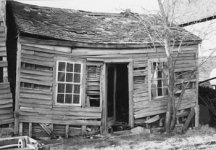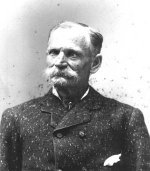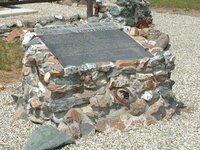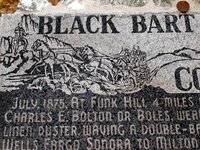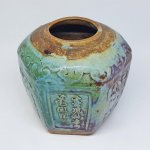pegleglooker
Bronze Member
- Jun 9, 2006
- 1,857
- 237
- Detector(s) used
- ace 250
- Primary Interest:
- All Treasure Hunting
I was wondering if anyone tried to find any of these locations. Her's the story first then the places.
enjoy
PLL
Black Bart
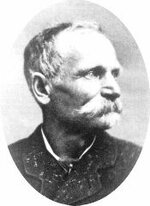
Charles E. Boles (aka Black Bart, aka Charles E. Bolton) lived in San Francisco. He was a man well into his 50's, about five-foot eight inches tall, ramrod straight, with gray hair and a mustache. A natty dresser, he favored diamonds and carried a short cane. People seeing him walk down the street in 1870's San Francisco would have thought him nothing more than a kindly, prosperous, old grandpa out for a leisurely stroll. But, he was more than that, much, much more. No one could have imagined that this man was really the famous, or infamous, Black Bart the stage robber-poet of Northern California, or P o 8, as he preferred to refer to himself. He was a man who liked to live well and intended to do just that. He stayed in fine hotels, ate in the best restaurants and wore the finest clothes. Now all he had to do was find a way to earn a living to support his preferred lifestyle, and Charles E. Boles found a dandy.
Bart was not a rampant pillager of Wells Fargo. He only robbed stages periodically, sometimes with as much as nine months time between robberies. He later stated that he "took only what was needed when it was needed." Most stagecoach drivers were submissive to Bart, seldom defying him with a cross word and obediently tossing down the strongbox when ordered to do so. This was not so with hard case George W. Hackett who, on July 13, 1882, was driving a Wells Fargo stage some nine miles outside of Strawberry, California. Bart suddenly darted from a boulder and stood in front of the stage, stopping it and leveling a shotgun at Hackett. He politely said: "Please throw down your strongbox." Hackett was not pleased to do so; he reached for a rifle and fired a shot at the bandit. Bart dashed into the woods and vanished, but he received a scalp wound that would leave a permanent scar on the top right side of his forehead.
The lone bandit continued to stop Wells Fargo stages with regularity, always along mountain roads where the driver was compelled to slow down at dangerous curves. It was later estimated that Bart robbed as much as $18,000 from Wells Fargo stages over the course of his career, striking twenty-eight times. He left no clues whatsoever, although he did leave a spare gun after one robbery. He was always extremely courteous to passengers, especially women travelers, refusing to take their jewelry and cash. He made a favorable impression on drivers and passengers alike as a courteous, gentlemanly robber who apparently wanted to avoid a gunfight at all costs.
On July 30, 1878 while robbing the stage from La Porte to Oroville, Black Bart added to his legend. A woman traveler threw out her purse in panic. Black Bart reportedly picked it up, bowed to the lady, and handed it back to her. "Madam, I do not wish your money," he said. "In that respect I honor only the good office of Wells Fargo." With that he took the mail sacks and the express box containing $500 in gold and a silver watch.
With his loot, Bart had invested in several small businesses which brought him a modest income, but he could not resist the urge to go back to robbing stages when money became short. After so many successful robberies, the P o 8 thought his luck would continue forever, but it was not to be. On November 3,1883, his luck ran out.
Why did Charles Boles decide to call himself Black Bart? Bart himself told Harry Morse and Captain Stone why when they were going out to pick up the gold alamagam from his last robbery. He said that he had read the story "The Case of Summerfield" several years earlier. When he was searching for a name, that one just popped into his mind. He chuckled at the stir his verse had created when signed by the name Black Bart.
On June 30, 1864, supposed Confederate troops held up the Placerville stage, and Captain Henry M. Ingraham, C.S.A. receipted to Wells Fargo for the treasure. Then in 1871, a San Francisco lawyer, William H. Rhodes, under the pen name "Caxton" resurrected the captain as Bartholomew Graham in a dime novel story called "The Case of Summerfield," which appeared also in the Sacramento Union. Graham, known as "Black Bart" according to Rhodes, had been "engaged in the late robbery of Wells Fargo's express at Grizly Bend!" He was an "unruly and wild villain" who wore all black, had a full black beard and a mess of wild curly black hair. It should be noted that Charles Boles never wore black nor did he have a beard nor was his hair black. Of more importance was the rest of his description: "He is 5 foot 10.5 inches in height, clear blue eyes and served in the civil war." Stage drivers never forgot those "clear blue eyes." By using the name Black Bart, Boles took advantage of an established dime novel bad guy. So the robber Black Bart was already known as someone to be feared. If you were robbed by Black Bart, you didn't argue, you just gave up the loot.
The legend ends, or begins to end, right where it began on a mountain pass called Funk Hill in Calaveras County, four miles outside of Copperopolis, California, on November 3, 1883.
It was early morning when 31 year old stage driver, Reason E. McConnell, (Mac to his friends), pulled up to Reynolds Ferry Hotel on the Stanislaus River. He had been to the Patterson Mine near Tuttletown and picked up 228 ounces-nineteen pounds-of amalgamated gold worth $4,200. Also in the Wells Fargo strong box was $550 in gold coins and $64 in raw gold. For security, the strong box had been bolted to the floor of the coach for the trip between Sonora and Milton. 19 year old Jimmy Rolleri came out of the hotel, run by his mother Olivia, and gave Mac a bundle of mail. He thought that the storm the previous night would have driven deer down from the high country and he wanted to ride along with Mac to do some deer hunting. Mac agreed, glad to have the company. Jimmy got his well-worn .44 Henry rifle and climbed aboard the Concord Coach, and Mac started the four horse team off toward Funk Hill.
The coach was half-way up Funk Hill when Jimmy Rolleri said to McConnell, "I'll get off here and work my way around the hill. Jimmy jumped off the coach to start hunting and McConnell continued up the hill for another 30 minutes. McConnell was rounding the head of Yaqui Gulch, close to the top of the ridge, when a hooded figure with a shotgun jumped out in front of him. It was Black Bart. Bart was jittery because he has seen Jimmy get off the stage, as he had been watching the whole time. He asked McConnell where the man went that jumped off. McConnell quickly replied it was a kid looking for stray cattle. Bart asked McConnell to throw down the the strong box. He said he couldn't because it was bolted to the floorboards. Bart told McConnell to get down off the stage and unhitch the horses. McConnell, stalling for time, said the brakes on the stage were bad and if he was to unhitch the horses the coach would roll down the hill. "It won't roll down the hill if you put rocks behind the wheels," Bart said. Hoping he had not pushed the robber too far McConnell said, "Why don't you do it?" Much to his surprise the robber picked up several large rocks and put them behind the wheels, all while holding the shotgun squarely aimed at him. McConnell knew the robber was now clearly getting agitated, and when he told him to get down and unhitch the horses, he took no more chances and followed orders. McConnell began leading the horses up the hill when Bart told him, "If you don't want to get shot, don't come back or even look back in this direction for at least one hour." As McConnell was leaving, Bart started hammering away at the strong box with his hatchet. McConnell stopped to catch his breath at the top of the ridge, about two hundred yards from the coach. He could not see the robber but he could hear him hammering and prying on the metal box. McConnell caught sight of Jimmy coming around the hill, still hunting. He knew with Jimmy's gun they could capture or kill the outlaw. He waved and got Jimmy's attention and signaled him to come around out of the robbers sight. Jimmy thought McConnell had sighted a deer. Mac quickly explained to Jimmy the situation and they started toward the coach. They were about 100 yards away when Bart, having finally broken into the strong box, jumped out of the coach and spotted Jimmy and Mac. McConnell, who had taken the rifle from Jimmy, fired at Bart twice as he started to run away. Being a poor shot, he missed. Jimmy, however, being a very good shot said, "Here, give it here, I won't miss." Jimmy took the rifle and fired just as Bart was entering a thicket. They saw him stumble as the bullet found its mark. Running to where they had last seen the robber, they found a bundle of mail he had dropped, and scattered further on was more mail that had blood on it. McConnell hitched the team back up and continued on to Copperopolis. He reported the robbery and a posse of local citizens went galloping out to the site. And, as they do today, they did a good job of destroying the "crime scene." Before nightfall Calaveras County Sheriff Ben Thorn had reached the scene and Wells Fargo Chief Detective James Hume had been notified and was on his way. Joaquin County Sheriff Tom Cunningham and Tuolumne County Sheriff George McQuade had been asked to watch out for Black Bart. But, despite all the volunteers, the vital evidence that was the undoing of Bart was found. Found: a travel worn leather valise containing a pair of field glasses, a belt, a razor, three soiled linen shirt cuffs, two paper sacks containing crackers and sugar, and two empty flour sacks. Also in the bag was an old handkerchief in which was knotted a handful of buckshot. The meaning of the buckshot is unknown, however, the faded letters "F.X.O.7" were in the corner of the handkerchief. Sheriff Thorn realized that the letters were a laundry mark. Later that day Sheriff Thorn turned over all the evidence to Detective Hume.
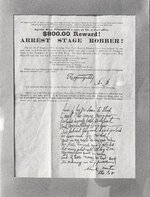
It took Bart about half an hour to break into the Wells Fargo strong box. He said by the time he had it open he was so exhausted that a ten-year-old boy could have captured him. When Bart got out of the stage, he had to start running because McConnell started shooting at him. He was so tired, and carrying that heavy sack weighting nearly 20 pounds, Bart could only run at a dog-trot. After running about a quarter of a mile he stopped, too tired to run any farther. His hand hurt and was bleeding heavily. He wrapped a handkerchief around the wound to help stop the bleeding. Bart found a rotten log and stuffed the sack with the gold amalgam into it. He kept the $500 in gold coins. Bart buried the shotgun in a hollow tree but threw away everything else except what he needed to get by. At one cabin along his escape route he stole a hat to replace his derby. Bart tried to avoid people but on Monday, near Bear Mountain, he accidentally stumbled into "Old Martin" the hunters cabin. He asked for false directions and was on his way. On Tuesday he arrived in Sacramento, having traveled almost 100 miles through the rough California mountains. Bart went to the barber shop and got a shave and a hair cut. Then he went to one of the better tailors and got measured for a suit of clothes, bought a ticket for the train to Reno, wandered around town for a while, then caught the train to Reno. He wrote two letters, one to his landlady saying he would be back in a few days and to hold his lodgings and one to his laundryman, Thomas Ware, to hold his laundry. He stayed in Reno a few days and then returned to Sacramento to pick up his clothes. On Saturday he returned to San Francisco and slept at the City-Front Lodging-House that night. The next day when it appeared that everything was normal, he returned to his residence at the Webb House and went back to his usual habits and enjoying the good life.
When Hume received the evidence from Sheriff Thorn, he turned it over to Harry Morse, who had been hired by Hume for the specific purpose of tracking down Black Bart. They agreed that the handkerchief with the "F.X.O.7" laundry mark was their best clue. But, where to start? Being as they were in San Francisco, they would start here. A check of city records revealed there were 91 laundries in the city. Morse knew he had a job in front of him, so he started going from laundry to laundry looking for a match to the laundry mark. After about a week, on Monday, November 12, Morse was at the Biggs California Laundry, at 113 Stevenson Street. The owner, Phineas Ferguson, recognized the mark and sent Morse to the tobacco shop of one of the company agents, Thomas C. Ware, at 316 Post Street. Tobacco shops in the 1880's were sort of early-day convenience stores. Ware said the washing belonged to C.E. Bolton a friend of his. Bolton was a mining man who often visited his mines. Sometimes he would be gone for a week or two, sometimes for as long as a month. Morse introduced himself as Harry Hamilton and said he too was involved in mining and would like to meet Bolton. Ware said that Bolton had just dropped off some laundry and would be around again the next morning. Morse also found out that Bolton lived at Webb House, No. 37 Second Street, room 40. Morse placed a watch on the house to keep an eye to see if any person went in or out. Morse returned to the laundry office to talk to Ware. Ware said, "Why, there comes Bolton now, I'll introduce you to him." Morse knew immediately from the description they had from people who had seen a stranger after the robbery that he had his man. Bolton was elegantly dressed, carrying a little cane. He wore a natty little derby hat, a diamond pin, a large diamond ring on his little finger and a heavy gold watch and chain. He was 5 feet 8 inches in height with deep sunken bright blue eyes, straight as an arrow, broad shouldered, high cheek bones and a large handsome grey mustache and imperial; the rest of his face was clean shaven. One would have taken him for a gentleman who had made a fortune and was enjoying it. Morse introduced himself as Hamilton and asked if Bolton was the mining man? Bolton said, "Yes I am." Morse then told Bolton he had a matter of importance relating to some mines that he wished to consult with him about. Could he spare a few moments? Bolton said, "Certainly." They walked down Bush to Montgomery Street, then to California and Sansome just like a couple of businessmen, right up to the door of Wells Fargo and Company's office. When Charles Bolton entered the office he seemed undisturbed. Morse requested to be seated and then the long awaited introduction was made to James B. Hume. Hume said he just wanted to have a little talk with him and commenced by inquiring about his business. Where were his mines located? On being closely pressed, Bolton was unable to give either the name of the mine or its exact location. Bolton began to get a little excited and great drops of perspiration stood out on his forehead and nose. He said, "I am a gentleman and I don't know who you are. I want to know what this inquiry is about? "Hume said he would tell him if Bolton would answer his questions. Morse noticed a piece of skin knocked off Bolton's right hand and brought it to the attention of Hume. Bolton said he struck it when getting off a train car at Truckee. Bolton was asked a great number of questions that he could not or would not answer. The interview had gone on for over three hours and Bolton finally grew indignant and said he was a gentleman and refused to answer any more questions.
Hume called Captain Stone of City Prison, and along with Hume and Bolton they went to Bolton's room at Webb House. In his room they found a large trunk, two valises, three or four suits of clothes, and among them a suit answering the description of those worn by the man who robbed the stage near Copperopolis. In one of he pockets they found a handkerchief bearing the same laundry mark as the one found at the scene of the robbery. In the trunk were a lot of cuffs and collars and shirts all with the same laundry mark. On being asked about the mark Bolton said, "I am not the only one whose things bear that mark. Others have their washing done at the same place. Somebody may have stolen the handkerchief from me, or I may have lost it and someone else found it." Bolton usually spoke with calmness and a pleasant smile. "Do you take me for a stage robber? I never harmed anybody in all my life, and this is the first time that my character has ever been called into question." Also found in Bolton's room was a Bible. The inscription read, "This precious Bible is presented to Charles E. Boles, First Sergeant Company B, 116th Illinois Volunteer Infantry, by his wife as a New Year's gift, God gives us hearts to which His -- faith to believe. Decatur, Illinois, 1865." It was signed by Mary Boles.
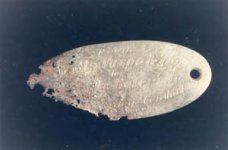
The next morning at 7:30 AM Captain Stone and Detective Hume took Charles Bolton and started out for Stockton. They telegraphed Sheriff Thorn to get Thomas P. Martin, "Old Martin" the hunter, to identify the stranger he saw after the robbery that had been committed by Black Bart. As soon as he saw Bolton he said, "That's the man, that's him!" Even now as the evidence piled up Bart did not show concern. He still joked and was amused that the huge crowd outside the jail thought that he was one of the officers and one of them was the prisoner. They took Bolton to Reason McConnell to see if he could identify him. When McConnell took the shot at Bart, he was at least 100 yards away, and up close he was wearing a mask. But when the two talked, McConnell told Morse that this was definitely the man that had robbed him. After many more hours of questioning Bart realized that things were not going his way. Bart asked Morse, "I don't admit that I committed this robbery, but what benefit would it be to the man who did, to acknowledge it?" Morse was excited, Bart was showing the first signs of weakening. Morse said, "If a stage robber forced his accusers to take him to trial and he was found guilty of several robberies, a judge might well give him a maximum sentence." Morse continued, "On the other hand, if a stage robber pleaded guilty to a single crime with which he was charged, then went on to make restitution, that probably would be taken into consideration by the judge." Bart asked Morse, "Suppose the man that did commit the robbery should do this, would it not be possible for him to get clear altogether?" To his credit Morse did not lie. "No. The law does not look upon stage robbery lightly. A man who pleads guilty to robbery must expect a prison sentence. However, that would certainly be better than a trial and the possibility of spending the rest of his life behind bars." Bart stood up, it was cool in the jail but there were beads of sweat on his forehead. Bart said, "I want you to understand that I'm not going to San Quentin, I'll die first." The interview went on for a little longer, always with the benefits of confession and restitution and the fear Bart had of a lengthy prison sentence. Then Morse called in Sheriff Thorn and Captain Stone. Bart had decided that he would take his chances with confession and restitution for the Funk Hill robbery. Then Bart said, "Let's us go after it." Thirty minutes later Morse, Stone and Black Bart were headed to Funk Hill to recover the stolen gold.
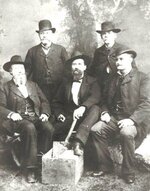
On November 16, 1883, in the Justice Court of Judge P.H. Kean in San Andreas, Charles E. Bolton entered a plea of "guilty" to the single charge of having robbed the Sonora-Milton stage on Funk Hill on November 3, 1883. He was bound over to the Calaveras County Superior Court for trial. The following day, November 17, 1883, after waiving jury trial, Bolton pleaded guilty to the same robbery charge before Superior Judge C.V. Gottschalk. Judge Gottschalk sentenced Charles E. Bolton to six years in San Quentin Prison. On Wednesday, November 21, 1883, he began serving his sentence at San Quentin.
In court Bart always denied that he was either Black Bart or Charles E. Boles. The prison records at San Quentin list him as Charles E. Bolton. However, during his incarceration he wrote many letters to his wife, Mary Boles.
From a San Quentin form: Charles Bolton's markings:
Reg. No. 11046...Small mole left cheek bone, scar right top forehead, scar inside left wrist, Fat. shield Right upper Arm. (tattoo). Gunshot wounds right abdomen. High cheek bones, heavy eye brows. Head: large & long. Forearms hairy & tuft of hair on breast. Prom. Nose and Broad at Base."
1 July 26, 1875. Calaveras County at Funk Hill; Wells Fargo box and mail.
2 December 28, 1875. Yuba County, four miles from Smartville. Wells Fargo box and mail.
3 June 2, 1876. Siskiou County, five miles north of Cottonwood; Wells Fargo Box and mail; a nighttime robbery.
4 August 3, 1877. Sonoma County, four miles from Fort Ross; Wells Fargo box and mail; first poem left here.
5 July 25, 1878. Butte County, one mile from Barry Creek Sawmill; Wells Fargo box and mail; second poem left here.
6 July 30, 1878. Plumas County, five miles from LaPorte; Wells Fargo box and mail.
7 October 2, 1878. Mendocino County, twelve miles from Ukiah; Wells Fargo box and mail.
8 October 3, 1878. Mendocino County, ten miles from Potter Valley; Wells Fargo box and mail.
9 June 21, 1879. Butte County, three miles from Forbes Town; Wells Fargo box and mail.
10 October 25, 1879. Shasta County, enroute to Buckeye; Wells Fargo box and mail; nighttime robbery.
11 October 27, 1879. Shasta County, twelve miles from Millville; Wells Fargo Box and mail.
12 September 1, 1880. Shasta County, near Last Chance Station; Wells Fargo Box and mail.
13 September 16, 1880. Jackson County, Oregon one mile from California line; Wells Fargo box and mail; nighttime robbery.
14 September 23, 1880. Jackson County, Oregon three mile from California state line; Wells Fargo box and mail.
15 November 20, 1880. Siskiyou County, one mile from Oregon border; Wells Fargo box and mail.
16 August 31, 1881. Siskiyou County, ten miles from Yreka; Wells Fargo box and mail.
17 October 8, 1881. Shasta County, fourteen miles from Redding; Wells Fargo box; nighttime robbery.
18 October 11, 1881. Shasta County, at Montgomery Creek; Wells Fargo box.
19 December 15, 1881. Yuba County, four miles east of Dobbins; Wells Fargo box and mail.
20 December 27,1881. Nevada County, at Bridgeport; Wells Fargo box and mail.
21 January 26, 1882 Mendocino County, six miles from Cloverdale; Wells Fargo box and mail.
22 June 14, 1882. Mendocino County, two miles from Little Lake; Wells Fargo box and mail.
23 July 13, 1882. Plumas County, five miles from LaPorte; Bart shot; nothing taken.
24 September 17, 1882. Shasta County, at Bass Hill; Wells Fargo box and mail.
25 November 23, 1882. Sonoma County, five miles from Cloverdale; Wells Fargo box and mail.
26 April 12, 1883. Sonoma County, five miles from Cloverdale; Wells Fargo box and mail.
27 June 23, 1883. Amador County, four miles from Jackson; Wells Fargo Box and mail.
28 November 3, 1883. Calaveras County, at Funk Hill; Wells Fargo box and mail; Bart shot.
There was another robbery they tried to pin on Bart, but he did not do it.
July 22, 1880. Sonoma County, three miles from Henry's Hotel; Wells Fargo Box and mail.
enjoy
PLL
Black Bart

Charles E. Boles (aka Black Bart, aka Charles E. Bolton) lived in San Francisco. He was a man well into his 50's, about five-foot eight inches tall, ramrod straight, with gray hair and a mustache. A natty dresser, he favored diamonds and carried a short cane. People seeing him walk down the street in 1870's San Francisco would have thought him nothing more than a kindly, prosperous, old grandpa out for a leisurely stroll. But, he was more than that, much, much more. No one could have imagined that this man was really the famous, or infamous, Black Bart the stage robber-poet of Northern California, or P o 8, as he preferred to refer to himself. He was a man who liked to live well and intended to do just that. He stayed in fine hotels, ate in the best restaurants and wore the finest clothes. Now all he had to do was find a way to earn a living to support his preferred lifestyle, and Charles E. Boles found a dandy.
Bart was not a rampant pillager of Wells Fargo. He only robbed stages periodically, sometimes with as much as nine months time between robberies. He later stated that he "took only what was needed when it was needed." Most stagecoach drivers were submissive to Bart, seldom defying him with a cross word and obediently tossing down the strongbox when ordered to do so. This was not so with hard case George W. Hackett who, on July 13, 1882, was driving a Wells Fargo stage some nine miles outside of Strawberry, California. Bart suddenly darted from a boulder and stood in front of the stage, stopping it and leveling a shotgun at Hackett. He politely said: "Please throw down your strongbox." Hackett was not pleased to do so; he reached for a rifle and fired a shot at the bandit. Bart dashed into the woods and vanished, but he received a scalp wound that would leave a permanent scar on the top right side of his forehead.
The lone bandit continued to stop Wells Fargo stages with regularity, always along mountain roads where the driver was compelled to slow down at dangerous curves. It was later estimated that Bart robbed as much as $18,000 from Wells Fargo stages over the course of his career, striking twenty-eight times. He left no clues whatsoever, although he did leave a spare gun after one robbery. He was always extremely courteous to passengers, especially women travelers, refusing to take their jewelry and cash. He made a favorable impression on drivers and passengers alike as a courteous, gentlemanly robber who apparently wanted to avoid a gunfight at all costs.
On July 30, 1878 while robbing the stage from La Porte to Oroville, Black Bart added to his legend. A woman traveler threw out her purse in panic. Black Bart reportedly picked it up, bowed to the lady, and handed it back to her. "Madam, I do not wish your money," he said. "In that respect I honor only the good office of Wells Fargo." With that he took the mail sacks and the express box containing $500 in gold and a silver watch.
With his loot, Bart had invested in several small businesses which brought him a modest income, but he could not resist the urge to go back to robbing stages when money became short. After so many successful robberies, the P o 8 thought his luck would continue forever, but it was not to be. On November 3,1883, his luck ran out.
Why did Charles Boles decide to call himself Black Bart? Bart himself told Harry Morse and Captain Stone why when they were going out to pick up the gold alamagam from his last robbery. He said that he had read the story "The Case of Summerfield" several years earlier. When he was searching for a name, that one just popped into his mind. He chuckled at the stir his verse had created when signed by the name Black Bart.
On June 30, 1864, supposed Confederate troops held up the Placerville stage, and Captain Henry M. Ingraham, C.S.A. receipted to Wells Fargo for the treasure. Then in 1871, a San Francisco lawyer, William H. Rhodes, under the pen name "Caxton" resurrected the captain as Bartholomew Graham in a dime novel story called "The Case of Summerfield," which appeared also in the Sacramento Union. Graham, known as "Black Bart" according to Rhodes, had been "engaged in the late robbery of Wells Fargo's express at Grizly Bend!" He was an "unruly and wild villain" who wore all black, had a full black beard and a mess of wild curly black hair. It should be noted that Charles Boles never wore black nor did he have a beard nor was his hair black. Of more importance was the rest of his description: "He is 5 foot 10.5 inches in height, clear blue eyes and served in the civil war." Stage drivers never forgot those "clear blue eyes." By using the name Black Bart, Boles took advantage of an established dime novel bad guy. So the robber Black Bart was already known as someone to be feared. If you were robbed by Black Bart, you didn't argue, you just gave up the loot.
The legend ends, or begins to end, right where it began on a mountain pass called Funk Hill in Calaveras County, four miles outside of Copperopolis, California, on November 3, 1883.
It was early morning when 31 year old stage driver, Reason E. McConnell, (Mac to his friends), pulled up to Reynolds Ferry Hotel on the Stanislaus River. He had been to the Patterson Mine near Tuttletown and picked up 228 ounces-nineteen pounds-of amalgamated gold worth $4,200. Also in the Wells Fargo strong box was $550 in gold coins and $64 in raw gold. For security, the strong box had been bolted to the floor of the coach for the trip between Sonora and Milton. 19 year old Jimmy Rolleri came out of the hotel, run by his mother Olivia, and gave Mac a bundle of mail. He thought that the storm the previous night would have driven deer down from the high country and he wanted to ride along with Mac to do some deer hunting. Mac agreed, glad to have the company. Jimmy got his well-worn .44 Henry rifle and climbed aboard the Concord Coach, and Mac started the four horse team off toward Funk Hill.
The coach was half-way up Funk Hill when Jimmy Rolleri said to McConnell, "I'll get off here and work my way around the hill. Jimmy jumped off the coach to start hunting and McConnell continued up the hill for another 30 minutes. McConnell was rounding the head of Yaqui Gulch, close to the top of the ridge, when a hooded figure with a shotgun jumped out in front of him. It was Black Bart. Bart was jittery because he has seen Jimmy get off the stage, as he had been watching the whole time. He asked McConnell where the man went that jumped off. McConnell quickly replied it was a kid looking for stray cattle. Bart asked McConnell to throw down the the strong box. He said he couldn't because it was bolted to the floorboards. Bart told McConnell to get down off the stage and unhitch the horses. McConnell, stalling for time, said the brakes on the stage were bad and if he was to unhitch the horses the coach would roll down the hill. "It won't roll down the hill if you put rocks behind the wheels," Bart said. Hoping he had not pushed the robber too far McConnell said, "Why don't you do it?" Much to his surprise the robber picked up several large rocks and put them behind the wheels, all while holding the shotgun squarely aimed at him. McConnell knew the robber was now clearly getting agitated, and when he told him to get down and unhitch the horses, he took no more chances and followed orders. McConnell began leading the horses up the hill when Bart told him, "If you don't want to get shot, don't come back or even look back in this direction for at least one hour." As McConnell was leaving, Bart started hammering away at the strong box with his hatchet. McConnell stopped to catch his breath at the top of the ridge, about two hundred yards from the coach. He could not see the robber but he could hear him hammering and prying on the metal box. McConnell caught sight of Jimmy coming around the hill, still hunting. He knew with Jimmy's gun they could capture or kill the outlaw. He waved and got Jimmy's attention and signaled him to come around out of the robbers sight. Jimmy thought McConnell had sighted a deer. Mac quickly explained to Jimmy the situation and they started toward the coach. They were about 100 yards away when Bart, having finally broken into the strong box, jumped out of the coach and spotted Jimmy and Mac. McConnell, who had taken the rifle from Jimmy, fired at Bart twice as he started to run away. Being a poor shot, he missed. Jimmy, however, being a very good shot said, "Here, give it here, I won't miss." Jimmy took the rifle and fired just as Bart was entering a thicket. They saw him stumble as the bullet found its mark. Running to where they had last seen the robber, they found a bundle of mail he had dropped, and scattered further on was more mail that had blood on it. McConnell hitched the team back up and continued on to Copperopolis. He reported the robbery and a posse of local citizens went galloping out to the site. And, as they do today, they did a good job of destroying the "crime scene." Before nightfall Calaveras County Sheriff Ben Thorn had reached the scene and Wells Fargo Chief Detective James Hume had been notified and was on his way. Joaquin County Sheriff Tom Cunningham and Tuolumne County Sheriff George McQuade had been asked to watch out for Black Bart. But, despite all the volunteers, the vital evidence that was the undoing of Bart was found. Found: a travel worn leather valise containing a pair of field glasses, a belt, a razor, three soiled linen shirt cuffs, two paper sacks containing crackers and sugar, and two empty flour sacks. Also in the bag was an old handkerchief in which was knotted a handful of buckshot. The meaning of the buckshot is unknown, however, the faded letters "F.X.O.7" were in the corner of the handkerchief. Sheriff Thorn realized that the letters were a laundry mark. Later that day Sheriff Thorn turned over all the evidence to Detective Hume.

It took Bart about half an hour to break into the Wells Fargo strong box. He said by the time he had it open he was so exhausted that a ten-year-old boy could have captured him. When Bart got out of the stage, he had to start running because McConnell started shooting at him. He was so tired, and carrying that heavy sack weighting nearly 20 pounds, Bart could only run at a dog-trot. After running about a quarter of a mile he stopped, too tired to run any farther. His hand hurt and was bleeding heavily. He wrapped a handkerchief around the wound to help stop the bleeding. Bart found a rotten log and stuffed the sack with the gold amalgam into it. He kept the $500 in gold coins. Bart buried the shotgun in a hollow tree but threw away everything else except what he needed to get by. At one cabin along his escape route he stole a hat to replace his derby. Bart tried to avoid people but on Monday, near Bear Mountain, he accidentally stumbled into "Old Martin" the hunters cabin. He asked for false directions and was on his way. On Tuesday he arrived in Sacramento, having traveled almost 100 miles through the rough California mountains. Bart went to the barber shop and got a shave and a hair cut. Then he went to one of the better tailors and got measured for a suit of clothes, bought a ticket for the train to Reno, wandered around town for a while, then caught the train to Reno. He wrote two letters, one to his landlady saying he would be back in a few days and to hold his lodgings and one to his laundryman, Thomas Ware, to hold his laundry. He stayed in Reno a few days and then returned to Sacramento to pick up his clothes. On Saturday he returned to San Francisco and slept at the City-Front Lodging-House that night. The next day when it appeared that everything was normal, he returned to his residence at the Webb House and went back to his usual habits and enjoying the good life.
When Hume received the evidence from Sheriff Thorn, he turned it over to Harry Morse, who had been hired by Hume for the specific purpose of tracking down Black Bart. They agreed that the handkerchief with the "F.X.O.7" laundry mark was their best clue. But, where to start? Being as they were in San Francisco, they would start here. A check of city records revealed there were 91 laundries in the city. Morse knew he had a job in front of him, so he started going from laundry to laundry looking for a match to the laundry mark. After about a week, on Monday, November 12, Morse was at the Biggs California Laundry, at 113 Stevenson Street. The owner, Phineas Ferguson, recognized the mark and sent Morse to the tobacco shop of one of the company agents, Thomas C. Ware, at 316 Post Street. Tobacco shops in the 1880's were sort of early-day convenience stores. Ware said the washing belonged to C.E. Bolton a friend of his. Bolton was a mining man who often visited his mines. Sometimes he would be gone for a week or two, sometimes for as long as a month. Morse introduced himself as Harry Hamilton and said he too was involved in mining and would like to meet Bolton. Ware said that Bolton had just dropped off some laundry and would be around again the next morning. Morse also found out that Bolton lived at Webb House, No. 37 Second Street, room 40. Morse placed a watch on the house to keep an eye to see if any person went in or out. Morse returned to the laundry office to talk to Ware. Ware said, "Why, there comes Bolton now, I'll introduce you to him." Morse knew immediately from the description they had from people who had seen a stranger after the robbery that he had his man. Bolton was elegantly dressed, carrying a little cane. He wore a natty little derby hat, a diamond pin, a large diamond ring on his little finger and a heavy gold watch and chain. He was 5 feet 8 inches in height with deep sunken bright blue eyes, straight as an arrow, broad shouldered, high cheek bones and a large handsome grey mustache and imperial; the rest of his face was clean shaven. One would have taken him for a gentleman who had made a fortune and was enjoying it. Morse introduced himself as Hamilton and asked if Bolton was the mining man? Bolton said, "Yes I am." Morse then told Bolton he had a matter of importance relating to some mines that he wished to consult with him about. Could he spare a few moments? Bolton said, "Certainly." They walked down Bush to Montgomery Street, then to California and Sansome just like a couple of businessmen, right up to the door of Wells Fargo and Company's office. When Charles Bolton entered the office he seemed undisturbed. Morse requested to be seated and then the long awaited introduction was made to James B. Hume. Hume said he just wanted to have a little talk with him and commenced by inquiring about his business. Where were his mines located? On being closely pressed, Bolton was unable to give either the name of the mine or its exact location. Bolton began to get a little excited and great drops of perspiration stood out on his forehead and nose. He said, "I am a gentleman and I don't know who you are. I want to know what this inquiry is about? "Hume said he would tell him if Bolton would answer his questions. Morse noticed a piece of skin knocked off Bolton's right hand and brought it to the attention of Hume. Bolton said he struck it when getting off a train car at Truckee. Bolton was asked a great number of questions that he could not or would not answer. The interview had gone on for over three hours and Bolton finally grew indignant and said he was a gentleman and refused to answer any more questions.
Hume called Captain Stone of City Prison, and along with Hume and Bolton they went to Bolton's room at Webb House. In his room they found a large trunk, two valises, three or four suits of clothes, and among them a suit answering the description of those worn by the man who robbed the stage near Copperopolis. In one of he pockets they found a handkerchief bearing the same laundry mark as the one found at the scene of the robbery. In the trunk were a lot of cuffs and collars and shirts all with the same laundry mark. On being asked about the mark Bolton said, "I am not the only one whose things bear that mark. Others have their washing done at the same place. Somebody may have stolen the handkerchief from me, or I may have lost it and someone else found it." Bolton usually spoke with calmness and a pleasant smile. "Do you take me for a stage robber? I never harmed anybody in all my life, and this is the first time that my character has ever been called into question." Also found in Bolton's room was a Bible. The inscription read, "This precious Bible is presented to Charles E. Boles, First Sergeant Company B, 116th Illinois Volunteer Infantry, by his wife as a New Year's gift, God gives us hearts to which His -- faith to believe. Decatur, Illinois, 1865." It was signed by Mary Boles.

The next morning at 7:30 AM Captain Stone and Detective Hume took Charles Bolton and started out for Stockton. They telegraphed Sheriff Thorn to get Thomas P. Martin, "Old Martin" the hunter, to identify the stranger he saw after the robbery that had been committed by Black Bart. As soon as he saw Bolton he said, "That's the man, that's him!" Even now as the evidence piled up Bart did not show concern. He still joked and was amused that the huge crowd outside the jail thought that he was one of the officers and one of them was the prisoner. They took Bolton to Reason McConnell to see if he could identify him. When McConnell took the shot at Bart, he was at least 100 yards away, and up close he was wearing a mask. But when the two talked, McConnell told Morse that this was definitely the man that had robbed him. After many more hours of questioning Bart realized that things were not going his way. Bart asked Morse, "I don't admit that I committed this robbery, but what benefit would it be to the man who did, to acknowledge it?" Morse was excited, Bart was showing the first signs of weakening. Morse said, "If a stage robber forced his accusers to take him to trial and he was found guilty of several robberies, a judge might well give him a maximum sentence." Morse continued, "On the other hand, if a stage robber pleaded guilty to a single crime with which he was charged, then went on to make restitution, that probably would be taken into consideration by the judge." Bart asked Morse, "Suppose the man that did commit the robbery should do this, would it not be possible for him to get clear altogether?" To his credit Morse did not lie. "No. The law does not look upon stage robbery lightly. A man who pleads guilty to robbery must expect a prison sentence. However, that would certainly be better than a trial and the possibility of spending the rest of his life behind bars." Bart stood up, it was cool in the jail but there were beads of sweat on his forehead. Bart said, "I want you to understand that I'm not going to San Quentin, I'll die first." The interview went on for a little longer, always with the benefits of confession and restitution and the fear Bart had of a lengthy prison sentence. Then Morse called in Sheriff Thorn and Captain Stone. Bart had decided that he would take his chances with confession and restitution for the Funk Hill robbery. Then Bart said, "Let's us go after it." Thirty minutes later Morse, Stone and Black Bart were headed to Funk Hill to recover the stolen gold.

On November 16, 1883, in the Justice Court of Judge P.H. Kean in San Andreas, Charles E. Bolton entered a plea of "guilty" to the single charge of having robbed the Sonora-Milton stage on Funk Hill on November 3, 1883. He was bound over to the Calaveras County Superior Court for trial. The following day, November 17, 1883, after waiving jury trial, Bolton pleaded guilty to the same robbery charge before Superior Judge C.V. Gottschalk. Judge Gottschalk sentenced Charles E. Bolton to six years in San Quentin Prison. On Wednesday, November 21, 1883, he began serving his sentence at San Quentin.
In court Bart always denied that he was either Black Bart or Charles E. Boles. The prison records at San Quentin list him as Charles E. Bolton. However, during his incarceration he wrote many letters to his wife, Mary Boles.
From a San Quentin form: Charles Bolton's markings:
Reg. No. 11046...Small mole left cheek bone, scar right top forehead, scar inside left wrist, Fat. shield Right upper Arm. (tattoo). Gunshot wounds right abdomen. High cheek bones, heavy eye brows. Head: large & long. Forearms hairy & tuft of hair on breast. Prom. Nose and Broad at Base."
1 July 26, 1875. Calaveras County at Funk Hill; Wells Fargo box and mail.
2 December 28, 1875. Yuba County, four miles from Smartville. Wells Fargo box and mail.
3 June 2, 1876. Siskiou County, five miles north of Cottonwood; Wells Fargo Box and mail; a nighttime robbery.
4 August 3, 1877. Sonoma County, four miles from Fort Ross; Wells Fargo box and mail; first poem left here.
5 July 25, 1878. Butte County, one mile from Barry Creek Sawmill; Wells Fargo box and mail; second poem left here.
6 July 30, 1878. Plumas County, five miles from LaPorte; Wells Fargo box and mail.
7 October 2, 1878. Mendocino County, twelve miles from Ukiah; Wells Fargo box and mail.
8 October 3, 1878. Mendocino County, ten miles from Potter Valley; Wells Fargo box and mail.
9 June 21, 1879. Butte County, three miles from Forbes Town; Wells Fargo box and mail.
10 October 25, 1879. Shasta County, enroute to Buckeye; Wells Fargo box and mail; nighttime robbery.
11 October 27, 1879. Shasta County, twelve miles from Millville; Wells Fargo Box and mail.
12 September 1, 1880. Shasta County, near Last Chance Station; Wells Fargo Box and mail.
13 September 16, 1880. Jackson County, Oregon one mile from California line; Wells Fargo box and mail; nighttime robbery.
14 September 23, 1880. Jackson County, Oregon three mile from California state line; Wells Fargo box and mail.
15 November 20, 1880. Siskiyou County, one mile from Oregon border; Wells Fargo box and mail.
16 August 31, 1881. Siskiyou County, ten miles from Yreka; Wells Fargo box and mail.
17 October 8, 1881. Shasta County, fourteen miles from Redding; Wells Fargo box; nighttime robbery.
18 October 11, 1881. Shasta County, at Montgomery Creek; Wells Fargo box.
19 December 15, 1881. Yuba County, four miles east of Dobbins; Wells Fargo box and mail.
20 December 27,1881. Nevada County, at Bridgeport; Wells Fargo box and mail.
21 January 26, 1882 Mendocino County, six miles from Cloverdale; Wells Fargo box and mail.
22 June 14, 1882. Mendocino County, two miles from Little Lake; Wells Fargo box and mail.
23 July 13, 1882. Plumas County, five miles from LaPorte; Bart shot; nothing taken.
24 September 17, 1882. Shasta County, at Bass Hill; Wells Fargo box and mail.
25 November 23, 1882. Sonoma County, five miles from Cloverdale; Wells Fargo box and mail.
26 April 12, 1883. Sonoma County, five miles from Cloverdale; Wells Fargo box and mail.
27 June 23, 1883. Amador County, four miles from Jackson; Wells Fargo Box and mail.
28 November 3, 1883. Calaveras County, at Funk Hill; Wells Fargo box and mail; Bart shot.
There was another robbery they tried to pin on Bart, but he did not do it.
July 22, 1880. Sonoma County, three miles from Henry's Hotel; Wells Fargo Box and mail.


